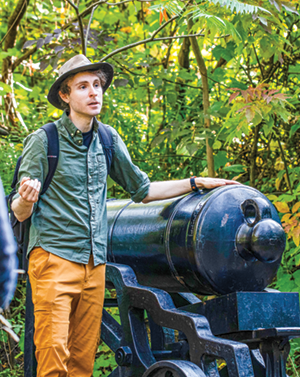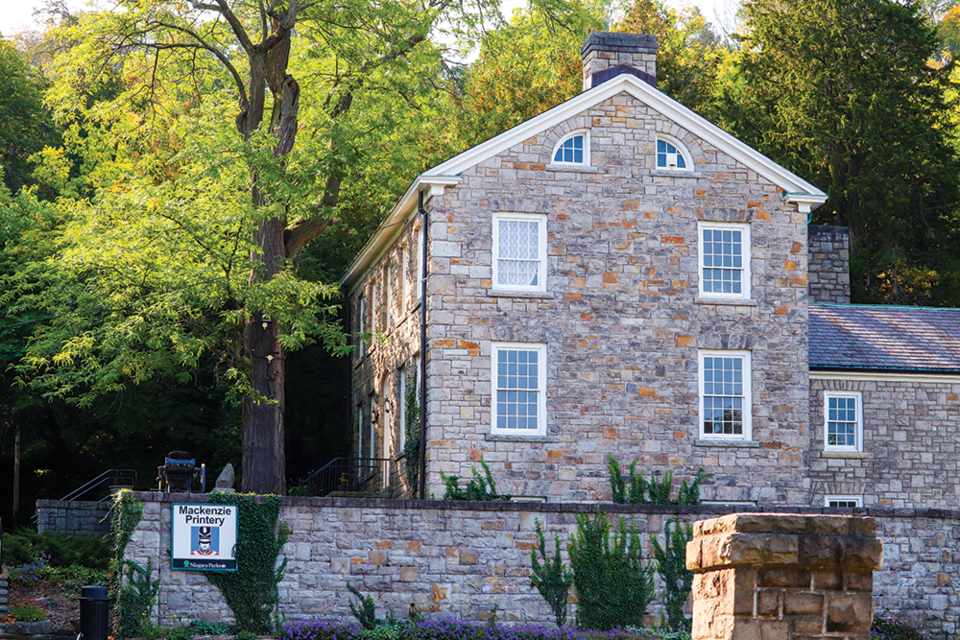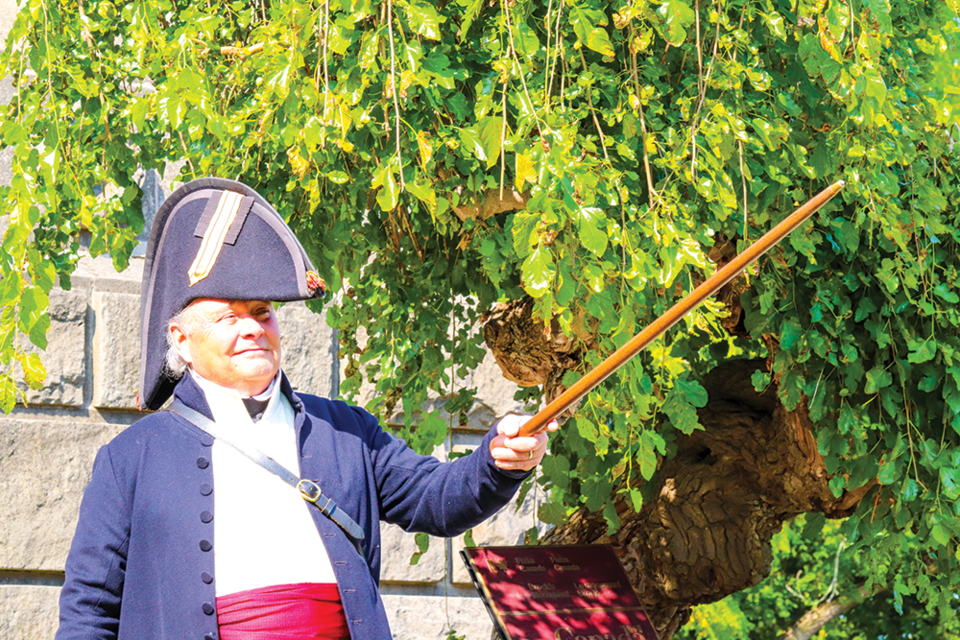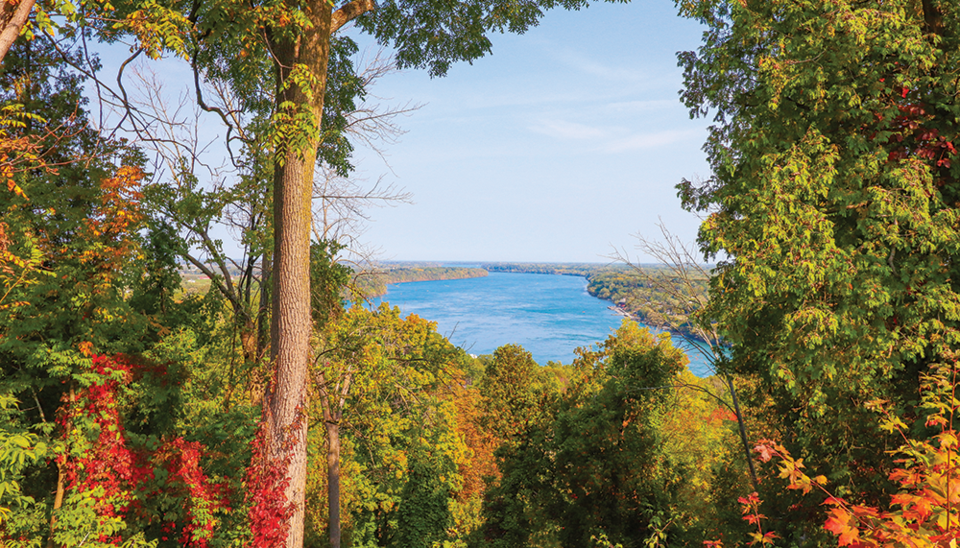Revisiting the battleground where Maj. Gen. Sir Isaac Brock fell, 208 years ago this week
What can a sleepy small-town journalist do on a Saturday morning, more than seven months into the COVID-19 pandemic? How about turn a metaphorical struggle into a physical one by climbing a very big hill.
The morning mist had barely evaporated from the Niagara Escarpment, and the birds were in full song-mode, as if to warn the entire population of my presence. I was here to attend a guided nature walk by Adam Shoalts, best-selling Canadian author of Alone Against the North, Beyond the Trees, and A History of Canada in Ten Maps. The hike would retrace the steps of Major General Sir Isaac Brock, who died aged 43 on October 13, 1812. The general was killed by a gunshot wound to the chest while leading a charge up the escarpment during the Battle of Queenston Heights.

The battle, the first major one in the War of 1812, was instrumental in shaping what we know of North America today. Fought near the richly historic town of Queenston, the battle was between the American forces (led by Major General Stephan Van Rensselaer), attempting to cross the Niagara River to establish a foothold in Canada, and the British forces (led by Brock and Major General Roger Hale Sheaffe) determined to repel them.
Despite being local to Niagara, I couldn’t remember the last time I had visited this historic spot. What was once a battleground is now a carefully manicured park, with hiking trails, monuments, trees, colourful flowers and a restaurant. The serenity of the location made it hard to believe that many years ago, it was the site of carnage and chaos, horses screaming and falling, and men shouting as they fired and reloaded their muskets.
I began my adventure by the Laura Secord Monument where the rest of the visitors were waiting. After we all introduced ourselves, Shoalts gave us a quick historical overview of the location and then encouraged us to take in the view — which was spectacular. The intense blue of the Niagara River sparkled in sharp contrast to the fall landscape. Other than our group, there were only a few tourists wandering from monument to monument. Since the pandemic closed the border between the US and Canada, foot traffic has slowed at Queenston Heights.
As we walked down the stone steps and arrived at the southern terminus of the Bruce Trail, the sudden crack of a shot, followed by several more, almost shook me out of my skin. An older man in the group saw me jump—he laughed and gestured towards the fields in the distance.
“Those are the cannons farmers use to scare away the birds from the vineyards,” he said with a reassuring wink, before turning back to the perilous work of photographing a bird in the trees.
Shoalts paused his lesson on how to identify poisonous berries to listen to the shots as well.
“The War of 1812 is still happening, folks!” he joked before continuing through the trees.
Indeed, the rapid-fire shots provided a battlefield-like ambience to the walk, puncturing the otherwise peaceful silence. They helped to lend a special sense of gravity to the various monuments, artifacts, and markers I encountered: a cannon mounted on a hill facing the American side, a plaque marking the various specific locations of events during the battle, and a pile of boulders marking where Lieutenant Colonel John Macdonell died while trying to lead a second charge against the American forces.
After General Brock fell, his comrade Macdonell (who was also his friend) jumped on Brock’s horse, Alfred, and allegedly shouted, “Avenge the general!” as he rallied the demoralized British troops. The second charge was almost successful, but a musket ball struck Alfred, who reared up. Another musket ball hit Macdonell in the spine, and he would die in great pain the next day. This second setback further demoralized the British forces, and although they were ultimately victorious in repelling the American forces from crossing the Niagara River, the loss of General Brock was irrecoverable for the British commanding forces.
A stroll through the historic town of Queenston revealed more historic treasures: the house of Laura Secord, where she began her 32-kilometre run to warn the British army of a surprise attack by the American forces during the war; and the Mackenzie Printery, where William Lyon Mackenzie got his start as a small-town journalist, before becoming a rebellion leader and eventually mayor (and, perhaps, becoming an inspiration for small-town journalists and young political firebrands everywhere).

The stroll through Queenston led us back to the escarpment, and I was shaken out of my historical reverie by a motorcycle cavalcade rumbling down the street. It felt good to see the motorcyclists smiling and waving at all the tourists, the roar of the motorcycles drowning out the sounds of shots. During a pandemic, seeing large groups of smiling faces had become a bit of a novelty. When they passed, I looked up at the wood steps leading up the escarpment with some trepidation. Telling myself that at least I didn’t have musketballs flying at me (however inaccurately they would fly), I began my climb.
I quickly discovered that in the noon heat, huffing and puffing up the Niagara Escarpment in the year 2020 was no small feat. I lugged a backpack full of lenses and carried a bulky DSLR camera, a far cry from the technology of 1812, which would have been composed of a pack of supplies and a 10-20 pound musket and bayonet. Despite my loose shirt and jacket, I was drenched in sweat before I was even halfway up the stairs. The average soldier in 1812 would have been carrying a massive amount of gear, while wearing sub-par leather footwear and most likely a full wool uniform and hat. They also would not have had the benefit of the wooden stairs I was currently struggling on, and would have done this climb on hand and foot as hell in the form of musket shot, cannon fire, and spiked hotshot rained down upon them.
I wasn’t the only one panting on the stairs at the halfway mark, and the climb was especially slow as all us out-of-shape tourists maintained our social distance.
“I don’t think I’d have made it on time for the battle,” I puffed.
“How did the soldiers do it?” another visitor panted, leaning on his walking stick.
The British army would have been composed of British regular soldiers, local militia, and Mohawk warriors. Brock would have been at the front leading the charge, in full scarlet officer regalia, plus a colourful scarf gifted to him by his ally, Shawnee leader Tecumseh. It was this uniform and scarf (and his uncommon height for the time, 6 foot two) that would turn him into a literal moving target for the American forces, which greatly outnumbered the British soldiers. As Brock waved and shouted enthusiastically to his men to keep moving (allegedly “Surgite!” as Brock University would later adopt as their motto), a lone American soldier took aim and pulled the trigger of his musket, felling the storied general with a shot directly to the heart. Despite his death, and a failed second charge, British reinforcements eventually arrived and the American forces surrendered.
My climb up the escarpment was ultimately successful, and, as I collapsed at the crest of the hill, the Brock Monument towered above me, as it did over everything in the park. The tower, normally open to tourists during non-pandemic times, is a 56-metre column that contains 235 steps and a lookout at the top. When I approached the monument, a splendidly dressed re-enactor came over to greet me at a safe distance.
“Why hello there,” he said, with a wave of his staff. He introduced himself as Scott Finlay, of Parks Canada.

According to Finlay, the monument is the resting place of Brock and Lieutenant-Colonel Macdonell, and was built in the 1850s by Toronto architect William Thomas and master stone carver Charles Thomas Thomas. The third oldest war memorial in Canada, it features a massive statue of the general at the very top, with his arm pointing toward the American border. This arm was struck by lightning in 1929, and large parts of the statue fell to the ground. Later renovations to the monument would include various safety features to ensure that if lightning did strike twice, at least the arm would remain intact.

At one point, Finlay paused the lively history lesson to pose with a couple for their wedding photos. They thanked him and then continued posing in various areas of the park. Their laughter echoed throughout the grounds, which despite the time (early afternoon) was still relatively empty of tourists.
“This is the perfect time to visit,” said Finlay. “With the border closed, there are less tourists and they are almost all local to the area. Nowadays when I ask people where they are from, I hear Fonthill, Welland…”
Indeed, that was the exact reason I had decided to have an adventure in Queenston heights that weekend — without the usual weekend crowds, there were no lines, no noise, no hassle. I said farewell to Finlay and the other staff at the Brock Monument, and went on one last expedition to find my car. On the way, I passed several families picnicking in the park. As my boots crunched the fall leaves, I could still feel the presence of the monument behind me, as if it were watching over the escarpment.
A moving shadow alerted me, and I glanced upwards. A large turkey vulture soared aimlessly above the empty parking lot. After a few circles, and seemingly disappointed at the slim pickings, it flew off into the distance until it disappeared.
I took this as my cue to also disappear, and as I drove home with the air conditioning on full blast, I felt supremely grateful for this 2020 life, despite the pandemic, with all its material comforts.
Surgite!



